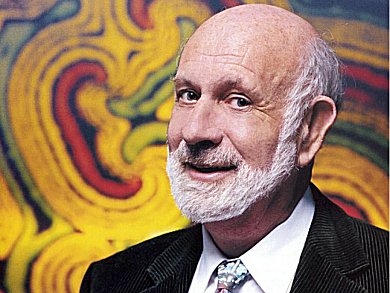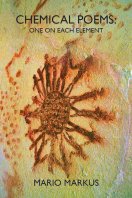To date, 118 chemical elements have been found. Professor Mario Markus, Max Planck Institute for Molecular Physiology, Dortmund, Germany, takes a look at each element, presenting a poem based on its natural properties along with a scientific overview of each element.
All 118 poems – as well as some poems about elements that only exist in theoretical simulations – are published in the book Chemical Poems: One On Each Element by Mario Markus. ChemViews magazine will publish a selection of these poems over the next months.
Fluorine |
Fluorine |
|
|
Pale yellow gas. It was isolated by the Frenchman Henri Moissan in 1886, for which he won the Nobel Prize in 1906. The name derives from the Latin fluere, to flow. Fluorine has the highest reactivity among all the elements. It reacts with all of them except helium and neon. Reacting with water and sand, it releases large amounts of heat. Its discoverer Moissan [1] and his wife died due to their work with this element. The chemists Davy and Gay-Lussac, too, were “martyrs” to fluorine. However, fluorine combined with elements that complete its outer electron shell, is extremely inert. For example, polytetrafluorethylene (Teflon) is used to make artificial blood vessels [2], as well as waterproof textiles (Goretex), non-stick coatings for pans, clothing for astronauts and viscosity reducers in inks [3]. Hydrofluorocarbons (HFCs) are components of anesthetics and corticoids. “Freons” (chlorofluorocarbons or CFCs [4, 5]) were formerly used in air conditioners and refrigerators. [1] G. F. Kunz, Henri Moissan 1907 |
The homicidal
|
Professor Mario Markus
Max Planck Institute for Molecular Physiology, Dortmund, Germany.
www.mariomarkus.com
Chemical Poems – One On Each Element,
Mario Markus,
Dos Madres Press 2013.
ISBN: 978-1-933675-98-5
Perfectbound, 308 pages, English, $30

Interview with Mario Markus: Poetry and Chemistry,
ChemViews magazine 2013.
DOI: 10.1002/chemv.201300010
The poems have also been published in German in:
- Chemische Gedichte,
Mario Markus,
Shaker Media, Herzogenrath, Germany, 2011.
ISBN: 978-3868587012
See all poems published so far by ChemistryViews.org.





